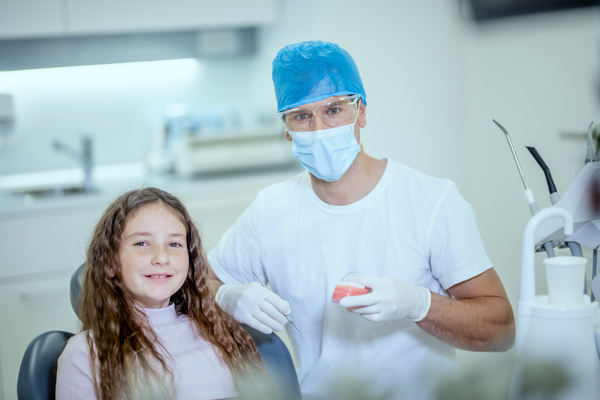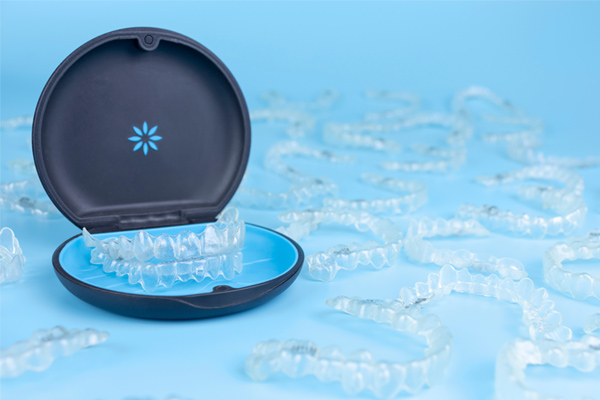Can a Pediatric Dentist Perform Orthodontic Procedures for My Child?

Taking a child to the pediatric dentist early in life has many benefits. For one thing, parents will be able to know if their child needs orthodontic treatment. In fact, a preventative dental care routine from an early age can prevent the need for orthodontic procedures completely. However, genetics, abnormal dental growth, injuries, and other factors beyond the parent's control can occur. Orthodontic treatment done during the development of the child's oral cavity is more comfortable, faster, and less expensive than procedures performed during the child's adolescent years.
Orthodontic treatment is performed for more than just aesthetics. It helps straighten and balance the alignment of the bite, which makes oral hygiene easier. Good oral hygiene means lower risks of developing tooth decay, cavities, and gingivitis. Your child's pediatric dentist can administer various orthodontic treatments.
The benefits of early orthodontic treatment
The American Academy of Pediatric Dentists states that treating children with orthodontic issues when they are between the ages of four and 11 can help avert severe orthodontic problems during their teenage years. Treating children in that age range is the ideal because the child's teeth and bones are still forming. Performing orthodontic treatment on children early in life causes less pain or discomfort. The treatment can correct issues such as overbites, ectopic eruptions, uneven spaces between the teeth, and other abnormal dental formations.
Why choose the pediatric dentist?
Pediatric dentists can handle a child's oral health right from infancy through adolescence. They are uniquely trained and experienced in caring for children's teeth, gums, and oral cavities throughout the different phases of childhood.
Children typically start to get their first set of teeth when they are six months old. By the time that they are six or seven, the baby teeth start to fall out to make room for the permanent teeth. The pediatric dentist will continually monitor the child's development to ensure that the teeth erupt properly. This means they can easily detect issues with the child's bite and recommend appropriate orthodontic treatments to correct any problems.
Children are not always patient and cooperative during dental procedures. However, the pediatric dentist knows how to deal with kids to make them comfortable. The dentist's office is also often set up in a way that keeps children at ease.
The orthodontic treatments provided by pediatric dentists can improve the child's confidence and makes cleaning the teeth easier. The child also will not have to worry about wearing braces during their teenage or adult years, when it could be awkward or embarrassing.
Orthodontic treatments provided by the pediatric dentist
A pediatric dentist can provide custom-made orthodontic devices explicitly designed for a child's needs. Common issues include the following.
Teeth alignment issues
Some people are genetically predisposed to having crooked, overlapping, or overcrowded teeth, and these issues may need orthodontic treatment even if the rest of their teeth come in perfectly straight. In addition to improving oral health, braces are also advised for aesthetic purposes.
Jaw alignment issues
Orthodontic treatment may be necessary if the top and bottom jaws are incorrectly positioned, an issue called malocclusion. Many children have a problem with jaw alignment, making it hard for them to chew properly or without pain. Parents need to start their kids on treatment as soon as is feasible. To help a child have a bright, healthy smile, dentists can provide the following orthodontic devices:
- Braces: Brackets and wires constructed from low-weight materials are used to gradually shift the child's teeth into place throughout treatment. Elastic bands may also help apply pressure to the child's teeth and jaws.
- Headgear: If the dentist determines that the child would do better with a headgear, they will connect the device to the braces at the back of the child's head. Headgear may be used when more power is required to shift the child's teeth and jaws into place.
- Retainers: After the child's orthodontic treatment is complete, they will get a retainer that has been specially constructed to fit their mouth. The child must wear a retainer to keep their teeth in their new positions. The teeth may shift if the child does not wear a retainer consistently.
- Custom space maintainers: These preserve the spaces left by baby teeth lost prematurely.
- Habit devices: These stop bad oral habits such as thumb or finger sucking before they cause damage to the teeth.
- Early expansion appliances: These correct crossbites and overbites.
Final note
Parents are often advised to take their children to the pediatric dentist early in life to ensure the proper development of the teeth. If your child needs orthodontic treatment, the pediatric dentist will be able to make appropriate recommendations based on the child's condition.
Request an appointment here: https://www.orthodonticprecision.com or call Precision Orthodontics & Pediatric Dentistry at (703) 391-8800 for an appointment in our Reston office.
Check out what others are saying about our dental services on Yelp: Pediatric Dentist in Reston, VA.
Recent Posts
Cavity treatment for kids can help children maintain their long-term oral health. Tooth decay in children can lead to discomfort, infection, and long-term dental complications if left untreated. Fortunately, early detection and appropriate pediatric dental care can prevent complications and support healthy oral development as children grow up.Cavities develop when bacteria in the mouth feed…
An emergency pediatric dentist is a parent’s go-to resource when unexpected dental issues arise. From accidents to sudden pain, these dental providers offer specialized care to restore children’s oral health and comfort quickly. Understanding their role and the treatments they offer empowers parents to handle dental emergencies with confidence, ensuring prompt, compassionate care for every…
Calcium and vitamins have important pediatric dental benefits for your child. They help their bones grow and develop, as well as help with their tooth development. Besides brushing and flossing regularly, children also need to have balanced nutrition for healthy teeth and gums. This article covers the importance of calcium and vitamins, so parents can…
Dental X-rays are essential parts of a pediatric dental visit. As a diagnostic instrument, an X-ray is used by pediatric dentists to uncover and highlight problem areas in order to investigate them further and develop an effective treatment plan. Continue reading to know when the dentist might recommend digital X-rays during a dental appointment.Pediatric dentists…


